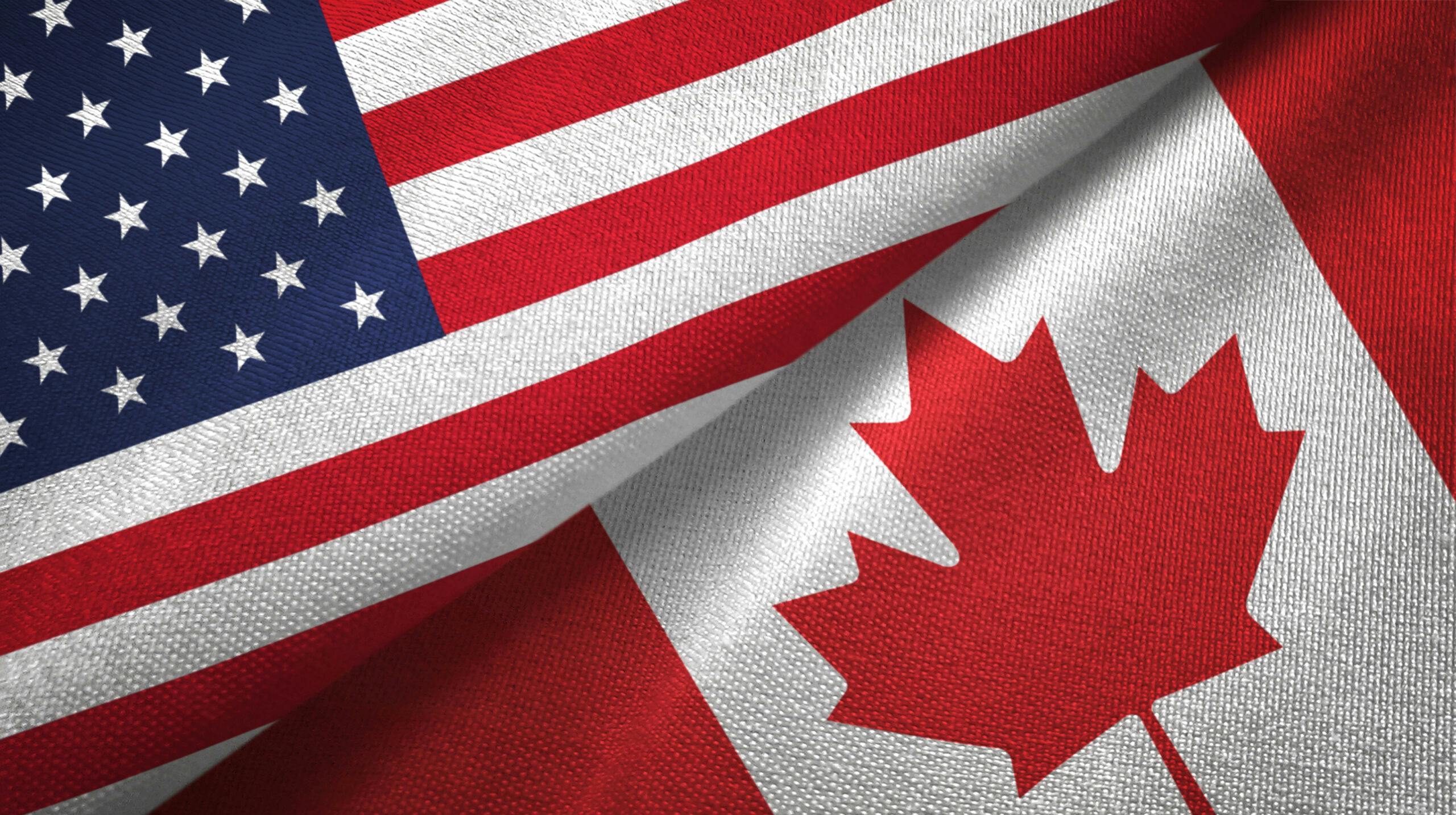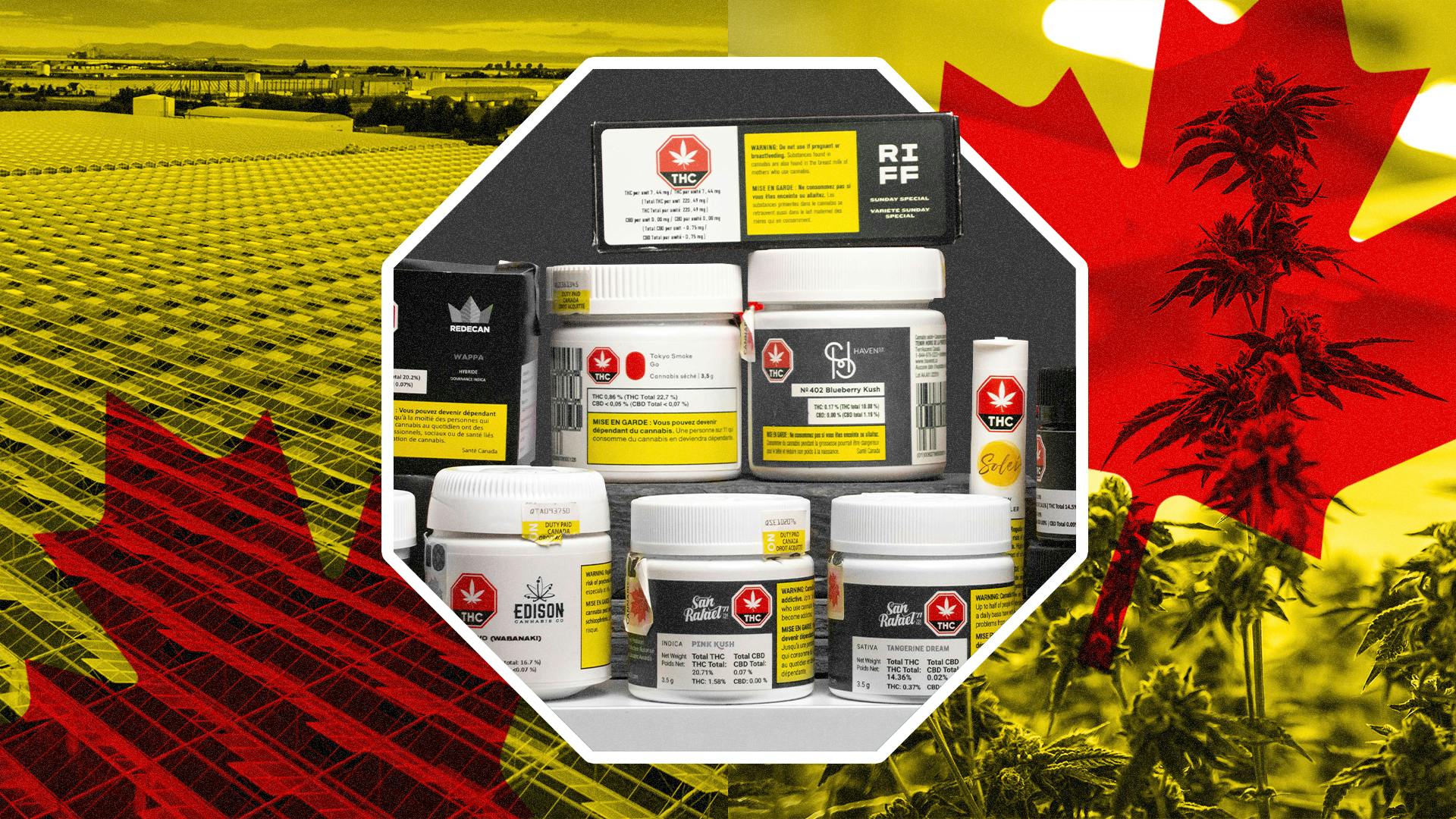Facilities shuttering from too much supply. Over-promising on products consumers didn’t end up buying. Cratering stock prices and profitability still out of reach.
These are some of the issues that continue to plague Canadian cannabis LPs four years after national recreational legalization, as producers aim to course-correct in a market still awash in competitive challenges, such as price compression and strict marketing regulations.
Too much weed is actually a bad thing?
You couldn’t go a month in 2021 and early 2022 without headlines announcing another Canadian cannabis grow facility closure. In 2021, Canopy Growth shut down its one-million-square-foot greenhouse in Niagara-on-the-Lake, a year after doing the same with two operations in B.C.
Approximately 2.7 billion grams (2,976 tons) has been grown but only 450 million grams reached store shelves—roughly a 20% sales rate.
according to data from MJBiz Daily
The same year, Tilray shut down operations in Nanaimo to focus on cultivation in B.C. at its Broken Coast facility. In April 2022, HEXO closed its Belleville, Ontario, facility to “leverage other sites with available infrastructure and capabilities to improve production outputs while significantly reducing costs across our entire network,” HEXO CEO Charlie Bowman said in a press release.
The reasoning behind all these closed facilities and laid-off staff circles back to an unfortunate trend in the Canadian cannabis market: producing too much weed.

“There was too much optimism right after recreational legalization in Canada, and we simply grew too much cannabis,” says Andrew Potter, an associate professor and Graduate Program Director at the Max Bell School of Public Policy in Montreal and co-author of High Time: The Legalization and Regulation of Cannabis in Canada.
He goes on to predict that cannabis will eventually become a commodity, similar to tobacco, where the plant will be grown not in greenhouses, but chiefly in vast fields.
Prices have never been cheaper yet producers can’t move product
Cannabis producers in Canada have sold less than 20% of their production since the country launched adult-use sales in October 2018, according to an analysis conducted by reporter Matt Lamers for MJBizDaily.
Of the roughly 2.7 billion grams (2,976 tons) of cannabis in Canada between October 2018 and December 2020, only approximately 450 million grams reached store shelves.
We should have seen it coming. The enthusiasm in 2017 and 2018 encouraged investors to fund huge greenhouses, spurred by optimism buoyed entirely by how much cannabis could be produced and executive bonuses tied to those greenhouse builds.
At the outset, Canadian LPs were building greenhouse cultivation spaces that were poorly sustained and expensive to manage, says Lucas McCann, co-founder of cannabis consultancy CannDelta.
“But the market shifted 18 months ago where the pendulum has swung, not just eliminate inflated middle management and give rise to foreclosures, but also to usher in price compression and some very lean teams, which favours micro-producers,” he adds.
Lucas McCann, co-founder CannDelta
You might have already noticed the price drop at your local cannabis store. According to Statistics Canada, the price for recreational cannabis decreased by 10% between June 2021 and June 2022.
“You’re seeing an acceleration of irrational pricing, particularly on discount flower, and we’ve made the determination that we’re going to get out of certain categories that don’t make sense and lose money,” Miguel Martin, the CEO of Aurora Cannabis, told analysts in February, per the Globe & Mail.
One such product vertical is beverages, which remains at a paltry 2% of total cannabis sales from the Ontario Cannabis Store in the third quarter of 2021. Starry-eyed investors were once enamoured with the potential of cannabis drinks after Constellation Brands, the U.S. alcohol giant, invested $5.2 billion into Canopy Growth in 2018.
But the promise of popular cannabis beverages didn’t materialize, even if Seth Rogen’s Houseplant brand sold one million cans of their cannabis-infused sodas in the country. Then again, Houseplant left the Canadian market in 2021, although the departure may only be temporary.
So much data, yet so little profit
For some LPs, diving deep into beverages and edibles wasn’t worth the risk. “We looked into beverages and edibles, but we wanted to focus on inhalable cannabis formats,” says Sophie Pilon, director of investor relations and communications at Alberta-based Sundial.
To counter turbulence in the market, Sundial also invested in retailers. They acquired Alcanna, the private liquor retailer with its brand of Nova Cannabis and Value Buds stores, and Spiritleaf retail stores within the past two years.
“Our management team realized capital providers were the most successful ones in the cannabis industry,” Pilon says, “and they weren’t necessarily companies making cannabis so that’s why decided to start the investment arm,” remarking on the launch of a 50/50 joint venture with SAF Opportunities LP—a member of the Canadian alternative investment management firm SAF Group—through a new corporation, SunStream Bancorp.

The added competitive advantage of those hundreds of cannabis retailers now under the Sundial banner circles back to giving consumers what they seek, she adds.
“The data we’re getting through what we’re selling at the stores is immense, and our analytics division is giving us information on what consumers prefer in terms of flavour profiles, which informs our production teams.”
Achieving profitability means recognizing what appeals to consumers, and so far Canadians have been clamouring for price-conscious flower. OSC.ca data found that in the third quarter of 2021, almost two-thirds of online sales of dried flower came in the price-per-gram range of $3 to $6.50, while only 8% of sales were for purchased flower in the $10 to $13.50 range.
Organigram was one of the few producers to boost its market share in 2021, and CEO Beena Goldenberg credits its value cannabis product, Shred, as a key driver of those sales.
“Many LPs don’t have the kind of product, and if they do, they’ll use a miller product,” she says, “but we always ensure the quality is still strong with Shred, and that’s why demand remains high for it.”
For Sundial, their retail chain of Value Buds outlets appeals to the price-conscious consumer, Pilon says. Still, they recognize how not every consumer has the same outlook on their buys, which is why Spiritleaf may attract the more premium-cannabis customer.
That multi-banner strategy may work for some LPs, but Sundial has yet to turn a profit. The same goes for Canopy Growth and countless other LPs. Stock-market observers have tracked negative results for LPs for months.
For example Canopy Growth saw a tremendous drop in its stock price, plummeting to $4.45 (as of August 15, 2022) from $67.74 on Sept. 7, 2018.
A spokesperson for Canopy Growth emailed a statement to Leafly: “Over the past year and amidst a fragmented and rapidly evolving industry landscape, we’ve taken the necessary actions to strengthen Canopy’s foundation and further our focus on leading across premium and mainstream in Canada.”
Bureaucracy comes between producer and consumer
Some industry critics see a major hurdle continuing to hamper growth in the Canadian cannabis space. “Because advertising and packaging restrictions are so severe, brands have a very limited ability to differentiate themselves from another, and the government isn’t doing anything about it,” says Potter.
“Health Canada isn’t in the business of caring about the economic health of LPs. They care about licensing, background checks, monitoring facilities, but they don’t look out for the success of the LPs they approve for licenses.”
– Lucas McCann, co-founder of cannabis consultancy CannDelta
Goldenberg finds it frustrating that LPs don’t have the opportunity to educate consumers beyond brick-and-mortar stores and age-gated sites.
“Stigma against cannabis still exists in this country because we can’t talk to people who aren’t heavily invested in the industry, such as those who are nervous about using cannabis.
We can’t do anything through broadcast or print media; we can’t use Google or Facebook marketing to cast a wider net with our educational projects. That’s why I get frustrated when I see non-stop ads for online gambling.”
There are promising signs some LPs are on the upswing this year.
Organigram is spending $38 million to upgrade its facility in Moncton and increase its capacity to 70,000 kilograms of flower per year, up from 40,000 today. Its net revenue increased by 88% from Q3 2021 to Q3 2022.
In its May 2022 report, Statistics Canada reported that overall cannabis sales were up 20% compared to sales a year ago.
And some slow-moving product lines are gaining traction. A report from Headset found that the Canadian edibles market grew 118% in 2021 compared to the previous year ($142 million vs $65 million).
This era in Canadian cannabis is fraught with challenges that will separate the successes from the failures, the forward-thinking brands from the ones stuck in the past, even if the recent past of 2018 isn’t that far ago.
In moments of uncertainty and concern, it’s not only about what leaders of businesses do but equally how they do it that matters and that kind of progress will be compelling to watch for anyone interested in the future of the Canadian cannabis space.








